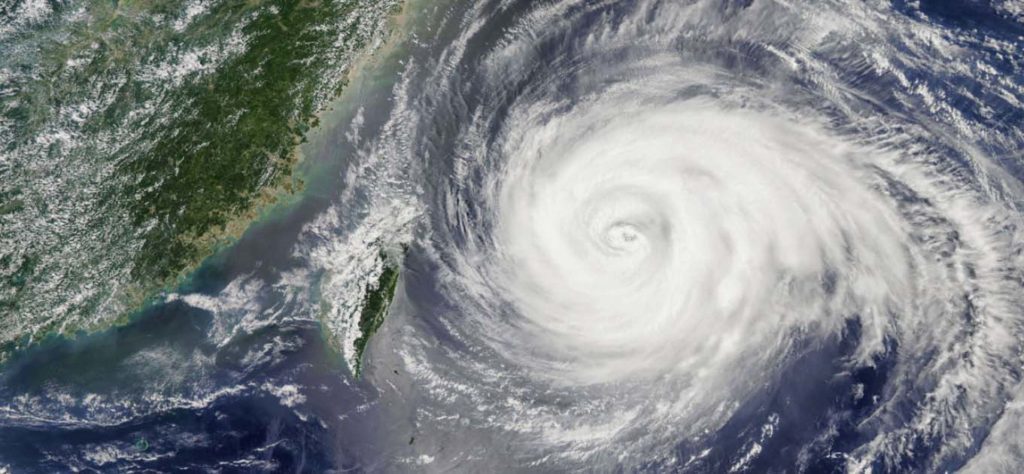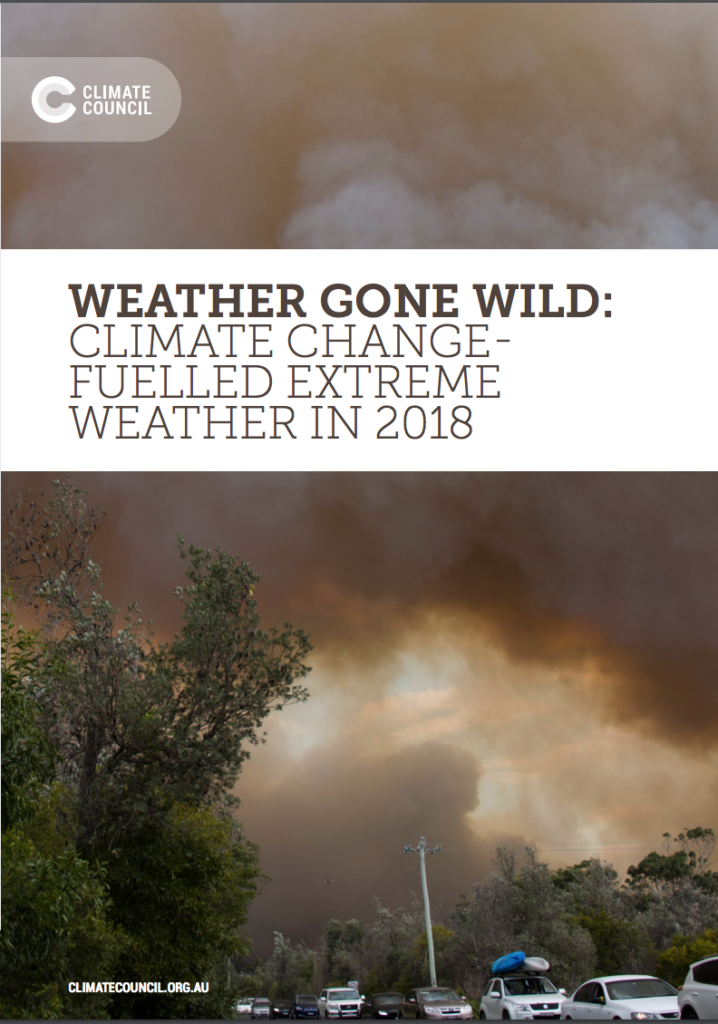Temperatures nudging 50 degrees, bushfires ravaging rainforests and people at increased risk of cardiac arrests because of heatwaves — this is the new normal for Australia and it’s being driven by climate change.
The Climate Council’s latest report, “Weather Gone Wild” has found climate change is increasing the frequency and/or severity of extreme weather and that Australians are suffering as a result.
Climate change is influencing all extreme weather events as they are occurring in a more energetic climate system. Australia is one of the most vulnerable developed countries in the world to the impacts of climate change. Heatwaves are becoming longer, hotter and starting earlier in the year. In the south of the country, where many Australians live and work, dangerous bushfire weather is increasing and cool season rainfall is dropping off, stretching firefighting resources, putting lives at risk and presenting challenges for the agriculture industry and other sectors, such as tourism.

Tropical Cyclone Maria approaches landfall, July 10, 2018. Image: Antti Lipponen. License: CC BY 2.0.
Climate change and extreme temperatures
The increase in global average temperatures has increased the probability of hot extremes (including record-breaking hot temperatures) and decreased the probability of cold extremes. In Australia, the ratio of observed hot to cold temperature records was 12 to 1 between 2000 and 2014. The annual number of hot days (above 35°C) and very hot days (above 40°C) has also increased strongly over most areas since 1950. Heatwaves are also lasting longer, reaching higher maximum temperatures and occurring more frequently over many regions of Australia. For more on climate change and extreme temperatures, read the full report here.
Climate change and intense rainfall
Extremes of intense precipitation (rain, snow or hail) over various time periods are increasing across most of the world, despite regional variability. Long-term observations suggest there has been a net increase in the number of heavy precipitation events globally since 1951, with the most consistent trends found in central North America and Europe. In Australia, there has also been an increasing trend over recent decades in the proportion of total annual rainfall stemming from heavy rainfall days. The physical relationship between temperature and the moisture holding capacity of the atmosphere suggests that for each 1°C rise in global average temperature, the atmosphere can hold approximately 7 percent more moisture. In Australia, the magnitude of extreme daily rainfall (mm/day) is increasing in line with this rate, whilst the magnitude of extreme hourly rainfall (mm/ hour) is increasing at double this rate, and more than triple this rate in the tropical north. For more on climate change and intense rainfall, read the full report here.
Climate change and cyclones, storms, and hurricanes
There is substantial evidence that climate change is influencing the large-scale environment in which tropical cyclones form and develop. The increasing ocean temperature affects the intensity of cyclones (along with changes in upper atmosphere conditions), both in terms of maximum wind speeds and in the intensity of rainfall that occurs in association with the cyclone. Storms draw energy from the surface waters of the ocean, and as more heat is stored in these upper waters, cyclones have a larger source of energy on which to draw. For more on climate change and cyclones, storms, and hurricanes, read the full report here.

Dead Sorghum Crop, Quirindi, November 2018. Image: Violette Snow.
Climate change and droughts
In Australia, it is clear that climate change has influenced rainfall in the southeast and southwest corners of the continent. Precipitation patterns have changed markedly in these regions, with a pronounced drying trend during the cool season (April – October), which is also the growing season. In the southeast of Australia, rainfall has declined by around 11 percent since the late 1990s. In the southwest of Australia, May to July rainfall has decreased by around 20 percent since 1970. For more on climate change and droughts, read the full report here.
Climate change and bushfires
The major factors influencing bushfires are sufficient fuel, a source of ignition and conducive weather conditions. Climate change is influencing all of these variables. In Australia, bushfire weather is measured using the Forest Fire Danger Index (FFDI), which estimates fire danger on a given day based on observations of temperature, rainfall, humidity and wind speed. The FFDI shows that extreme fire weather (the most extreme 10 percent of fire weather days) has increased over recent decades over large areas of Australia, particularly across southern Australia and eastern Australia. The duration of the bushfire season has also lengthened over many areas of Australia. Climate change is contributing to these changes, including through the increase in average temperature. Hot weather dries out fuel and increases its flammability, increasing the rate of spread and intensity of bushfires. For more on climate change and bushfires, read the full report here.
